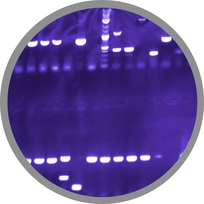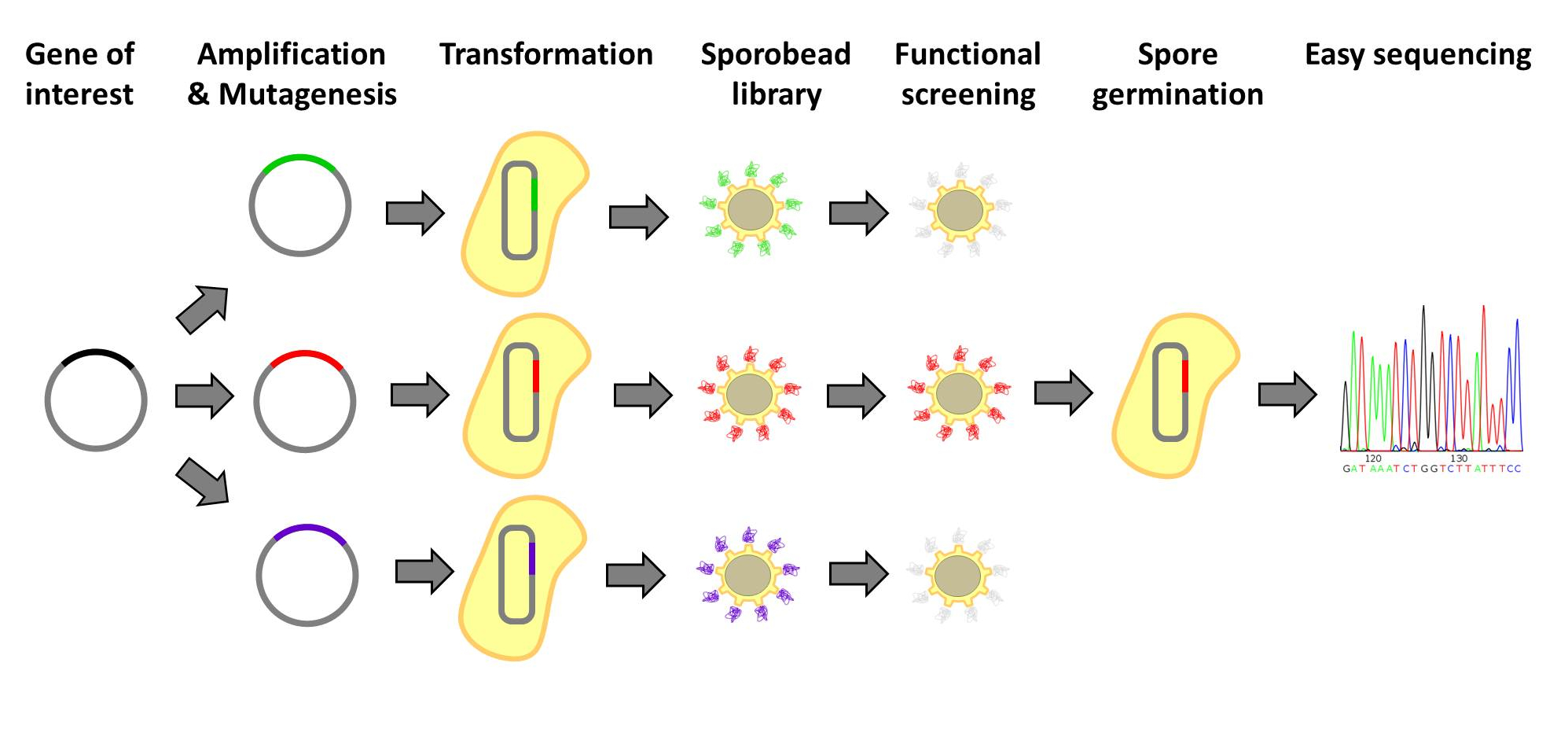Team:LMU-Munich/Application/Protein Screening tour
From 2012.igem.org
Franzi.Duerr (Talk | contribs) |
|||
| Line 4: | Line 4: | ||
| - | == | + | ==Protein Screening== |
| + | |||
| + | |||
| + | |||
| + | <p align="justify">[http://www.ncbi.nlm.nih.gov/pubmedterm=screening%20libraries%20to%20identify%20proteins%20with%20desired%20binding%20activities%20using%20a%20split%20gfp%20reassembeling%20assay Designer protein] molecules, which bind their desired targets specifically, have numerous uses. Designer proteins are frequently created by constructing and screening libraries of mutated protein variants. Proteins with desired properties are selected for in this method. Despite the success of the method, it is labor intensive and limited in throughput. Individual mutated proteins must be tracked throughout the entire screening process. Our [https://2012.igem.org/Team:LMU-Munich/Spore_Coat_Proteins '''Sporo'''beads] would eliminate the need to track protein mutants, allowing researchers to screen huge quantities of mutated proteins, only identifying and sequencing these proteins after successful screening. Figures 1 and 2 offer schematics of the process of using '''Sporo'''beads for protein screening for tests and affinities.</p> | ||
| - | |||
{| style="color:black;" cellpadding="3" width="70%" cellspacing="0" border="0" align="center" style="text-align:left;" | {| style="color:black;" cellpadding="3" width="70%" cellspacing="0" border="0" align="center" style="text-align:left;" | ||
| Line 41: | Line 44: | ||
| - | [[File: | + | {| width="100%" cellpadding="20" |
| + | |[[File:LMU Arrow purple BACK.png|right|80px|link=Team:LMU-Munich/Application]] | ||
| + | |[[File:LMU Arrow purple NEXT.png|left|80px|link=Team:LMU-Munich/Application/Further_Applications]] | ||
| + | |} | ||
Revision as of 13:40, 26 October 2012

The LMU-Munich team is exuberantly happy about the great success at the World Championship Jamboree in Boston. Our project Beadzillus finished 4th and won the prize for the "Best Wiki" (with Slovenia) and "Best New Application Project".
[ more news ]


Protein Screening
[http://www.ncbi.nlm.nih.gov/pubmedterm=screening%20libraries%20to%20identify%20proteins%20with%20desired%20binding%20activities%20using%20a%20split%20gfp%20reassembeling%20assay Designer protein] molecules, which bind their desired targets specifically, have numerous uses. Designer proteins are frequently created by constructing and screening libraries of mutated protein variants. Proteins with desired properties are selected for in this method. Despite the success of the method, it is labor intensive and limited in throughput. Individual mutated proteins must be tracked throughout the entire screening process. Our Sporobeads would eliminate the need to track protein mutants, allowing researchers to screen huge quantities of mutated proteins, only identifying and sequencing these proteins after successful screening. Figures 1 and 2 offer schematics of the process of using Sporobeads for protein screening for tests and affinities.
|
|
 "
"





